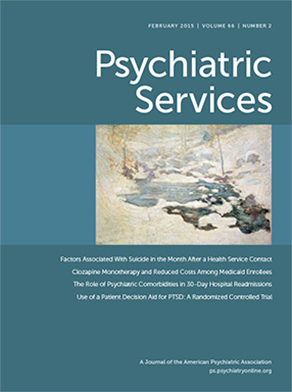In this issue, Vasiliadis and colleagues report findings that have potential implications for delivery of both general medical and mental health services. They report that in a large sample of individuals who had died by suicide, most had made a health service contact within the previous 12 months and a very high proportion had died within one month of any contact. The risk was highest after hospitalization. The authors essentially confirmed earlier findings, especially in the case of psychiatric disorders. They also report that residing in a health resource–rich jurisdiction may increase access to outpatient services, which may have had a positive impact because some patients in these regions had a longer time to suicide than those in other regions. Vasiliadis and colleagues suggest that this may provide additional time for intervention. However, it does not appear that individuals in better-resourced areas whose contacts were with emergency and hospital inpatient services had a longer time to suicide. Thus suicide rates may not be lower in these areas, and the longer time to suicide may or may not have any real impact on suicide rates. Suicide risk reduction likely depends on several other factors, both in health services (for example, access to sustained interventions) and in other sectors (for example, social support). The lack of association between suicide risk and contacts with emergency and hospital inpatient services in these regions suggests that despite availability of specialists and other institutional resources, individuals seeking such services do not benefit from them—possibly because of lack of coordination and follow-up.
Vasiliadis and colleagues report that deceased individuals who had a general medical condition invariably made a health service contact—almost two-thirds had used emergency and hospital inpatient services. At the very least, the implication of this finding is that providers of general medical services need to be sensitized about suicide risk among individuals seeking help. This will, of course, require greater precision in evaluating suicide risk, and researchers will need to identify the types of disorders, personal and social profiles, and nature of presentation associated with higher risk. Older individuals seeking outpatient and emergency services appear to be at particularly high risk, likely because of complex and serious general medical disorders, depression, and early dementia.
As expected, the highest risk after any health care contact was for patients with a psychiatric disorder, and the risk increased with intensity of service sought. The authors correctly note that this may indicate a lack of immediate follow-up, especially after an emergency service visit or hospitalization. This suggests the need for better continuity of services and access to case management services for those at higher risk (for example, those with serious mental disorders, a first episode of psychosis, or previous suicide attempts). Ensuring access—not simply referring—to effective social and health services and involvement of patients’ social support systems at the time of and after an emergency service visit and hospitalization may have a positive impact. Instituting protocols for follow-up after emergency visits may be a promising approach.
Several other issues emerge from this study. The gap between health and addiction services is a major challenge requiring further study and potential intervention, given the strong association of substance abuse, mental and general medical morbidity, and mortality from suicide. Population-level data lack precision on important variables such as employment, socioeconomic status, stress, and precise diagnosis. The authors suggest using registration in a public drug plan as a proxy for employment, but this could be misleading because not all those in such programs are unemployed. Many have low-paying jobs or are part-time workers with no private insurance. To have a real impact on suicide risk, these population-based results need to be tested at the individual level to make more precise and detailed observations and to develop possible interventions.
Last, but not least, one in five people in Vasiliadis and colleagues’ sample had no health service contact, which highlights the limits of any health care intervention in reducing suicide risk. Suicide is among the most tragic and complex human behaviors and reflects perhaps the most fundamental philosophical question. Factors associated with suicide are numerous and highly complex—situated in the social as well as the individual sphere. However, as Vasiliadis and colleagues’ study suggests, there may be small but important windows of opportunity to intervene within health services for most of those who do reach out to health care providers before the tragic event.

